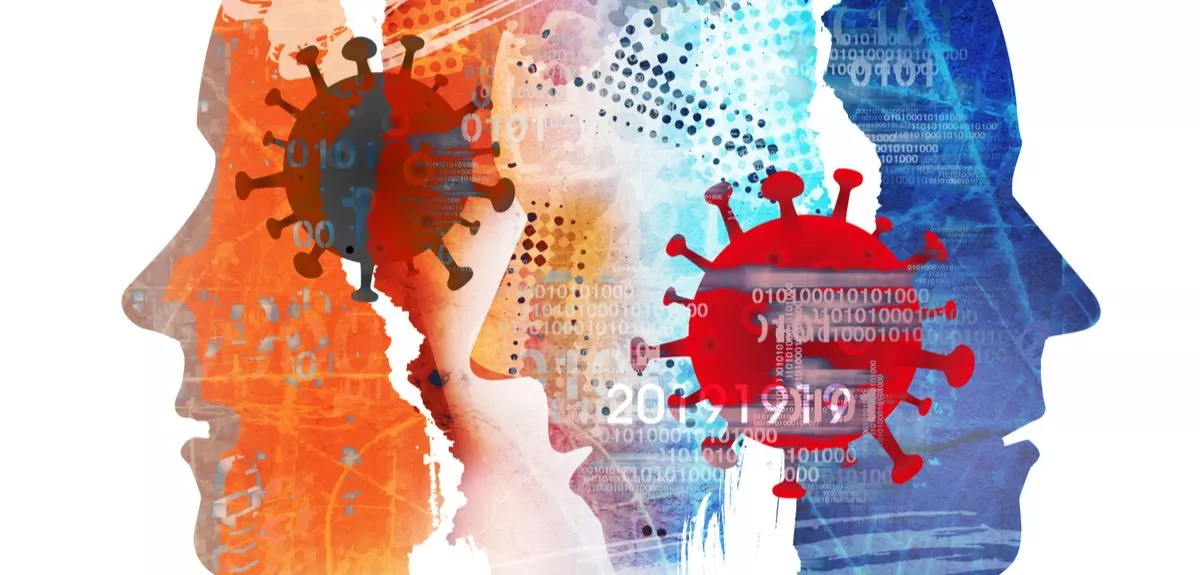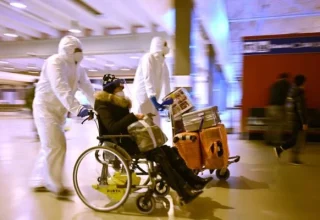ISLAMABAD, July 8(ABC): After 2 years of living with COVID-19, the physical toll of the pandemic is evident, in terms of cases, hospitalizations and deaths, but what of the mental effects? Frontline workers and young people have been some of the hardest hit, but no one has escaped the impact of the pandemic. In this Special Feature, Medical News Today investigates how the pandemic has affected mental health worldwide and asked experts how we might address this issue.
All data and statistics are based on publicly available data at the time of publication. Some information may be out of date. Visit our coronavirus hub for the most recent information on the COVID-19 pandemic.
In May 2020, the United Nations reported that stress and anxiety levels had risen substantially during the COVID-19 pandemic. Since then, several waves of COVID-19 have left their mark around the globe.
The World Health Organization (WHO) definesTrusted Source mental health as “a state of well-being in which an individual realizes his or her own abilities, can cope with the normal stresses of life, can work productively and is able to make a contribution to his or her community.”
Mental health issues occur when people cannot cope well with the stresses of life. A pandemic is a stressor that few might have envisaged having to cope with.
Fear and isolation
The fear of contracting SARS-CoV-2, the virus that causes COVID-19, together with concern about economic effects, has caused anxiety and stress.
Frontline workers, particularly medical professionals, have experienced burnoutTrusted Source and chronic stress from the increased pressure.
Multiple lockdowns, physical distancing, and fear of infection have increased isolation, loneliness, and anxiety, all factors that, according to Lee Chambers, psychologist and founder of Essentialise Workplace Wellbeing, are “massive catalysts” for mental health issues.
Other experts agree. According to Dr. Adrian James, president of the Royal College of Psychiatrists:
“Social isolation, loneliness, stress and anxiety, domestic abuse, bereavement, financial difficulties, unemployment and severe COVID-19 infection are all factors that might have caused people’s mental health to deteriorate.”
Worldwide increases in mental health issues
In 2019, a study in The LancetTrusted Source reported that some 12.5% of the global population would have an issue with their mental health at some time in their life. In March 2022, the WHO reported that worldwide, anxiety and depression increased by 25%Trusted Source in the first year of the pandemic.
Lee Chambers has seen evidence of this: “If I’m honest, from my perspective, the incidence of everything [mental health-related] has increased. […] It has been amplified for people who are already suffering with certain conditions. They’ve found less access to services and challenges in managing their everyday existence.“
He added: “One thing that continually got flagged was new incidences. People who had never previously identified as having any mental health condition had actually disclosed […] or, in surveys, said they were struggling significantly. That is interesting, as it shows the impact is reaching beyond those who were already impacted pre-[COVID-19].”
Early impact
The beginning of the pandemic appears to have had the greatest impact on mental health. A report from the European Parliament Research Service highlighted increases in mental health concerns in many European countries at this time.
Eight out of 10 people in Italy reported a need for psychological care; in the Netherlands, over a third of the population reported anxiety.
Similar patterns became evident in the United States. In a study of people aged 18-35, 80% of survey respondents reported significant depressive symptoms, while 61% reported moderate or severe anxiety.
In April 2021, the National Institute of Mental Health reportedTrusted Source that rates for anxiety, depression, stress-related symptoms, substance misuseTrusted Source, and suicidal thoughts were almost double those expected before the pandemic.
However, concerns that suicide rates might rise appear to have been unfounded as, according to the Centers for Disease Control and Prevention (CDC)Trusted Source, these have fallen slightly.
In the United Kingdom, mental health referrals to the National Health Service (NHS) have reached record levels, as Dr. James told MNT:
“The pandemic has had a major impact on already stretched specialist mental health services, which received a record 4.3 million referrals during 2021. It’s also resulted in the largest mental health backlog in NHS history with at least 1.4 million people waiting for treatment.”
Who is most affected?
An analysisTrusted Source of more than 200,000 people in northern Europe found that younger respondents and those with previously diagnosed mental illness reported poorer mental health during the first months of the pandemic. However, mental health issues are not confined to these groups.
Sharon Greene, L.C.S.W., who specializes in treating anxiety and depression in children and adolescents of Providence Saint John’s Child & Family Development Center in Santa Monica, CA, told MNT of the pandemic’s widespread impact:
“I actually feel everyone has been impacted across the board in different ways. Of course, frontline workers and health professionals were at the forefront and may have experienced more trauma. We are only starting to understand the mental health impacts of the pandemic.”
Young people may be less at risk to contract a SARS-CoV-2 infection, but they have not escaped the pandemic’s effects. Disruption to education, work, and social interactions have all taken their toll.
In August 2020, the International Labour Organization described the “impact of the pandemic on young people to be systematic, deep and disproportionate.“
Several studies have found that students have experienced higher levelsTrusted Source of symptoms of depression and post-traumatic stress disorderTrusted Source (PTSD) during the pandemic.
“Younger people […] are more likely to fall into negative coping mechanisms because they don’t have the experience and they live in a very digital world — that’s a challenge for them. Dealing with uncertainty when you are at that adolescent-adult transition is hard enough when everything is bright and rosy.”
– Lee Chambers
It is unsurprising, therefore, that a recent OECD report states that the “[p]revalence of symptoms of anxiety and depression has risen dramatically among young people and remains higher than pre crisis levels.”



























